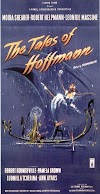 |
Wonder Company of the 20th Century. |
 |
| Tom Lyle Williams in 1929, from an article in a trade magazine. |
On October 29, 1929, a news flash announced that the Dow industrial average had fallen almost twenty-three percent, and the stock market had lost a total of sixteen billion dollars in value in a month. Sixteen billion dollars.
Tom Lyle knew the stock market crash would be devastating for the country in general, and would certainly ruin many companies. Although Maybelline, as a family-owned business, was not directly affected by the Wall Street disaster, there was no question that the aftermath would be devastating. Who would choose to buy eye cosmetics over food for the family?
The prosperity and opulence of the Roaring Twenties were gone, disappearing along with the vamps who had loaded up with Maybelline’s seventy-five-cent product. In order to keep his company alive in the years to come, Tom Lyle knew he would have to find ways to keep his product in the public eye, yet at a price women could afford. The flashy, flapper look was quickly devolving to a more demure look fit for austere times.
Despite the national situation, he felt good about the future. In fact, when Noel showed him a story in The Wall Street Journal about a brand-new skyscraper being constructed over the old Waldorf-Astoria Hotel in New York--the Empire State Building, the tallest structure in the world--Tom Lyle took it as a sign that the bad economy would be only a temporary dip in the road.
He was rarely so wrong. When Emery suggested an ad tie-in to the Empire State Building--Things Are Looking Up, featuring young women with gorgeous eyes gazing up at a new skyscraper--Tom Lyle backed it enthusiastically...until it became clear that for most of the country, things were looking very much down. They abandoned the new ad campaign as the market continued to decline, wages plummeted, and credit dried up. When industrial production also collapsed, many businesses went with it.
But not Maybelline. Although innovative and widespread advertising was responsible for a lot of the company's success over the years, it was not the whole story. So was constant innovation in the lab, and that spring, thanks to the introduction of an improved waterproof eye makeup, total sales rose to $750,000--at a time when most businesses were struggling simply to keep their wallowing businesses afloat.
Read more about Maybelline's success during the worst economic downturn in American history and it's secret to becoming the most successful cosmetic company in the world in
The Maybelline Story and the Spirited Family Dynasty Behind It.





.jpg)

0 Yorumlar